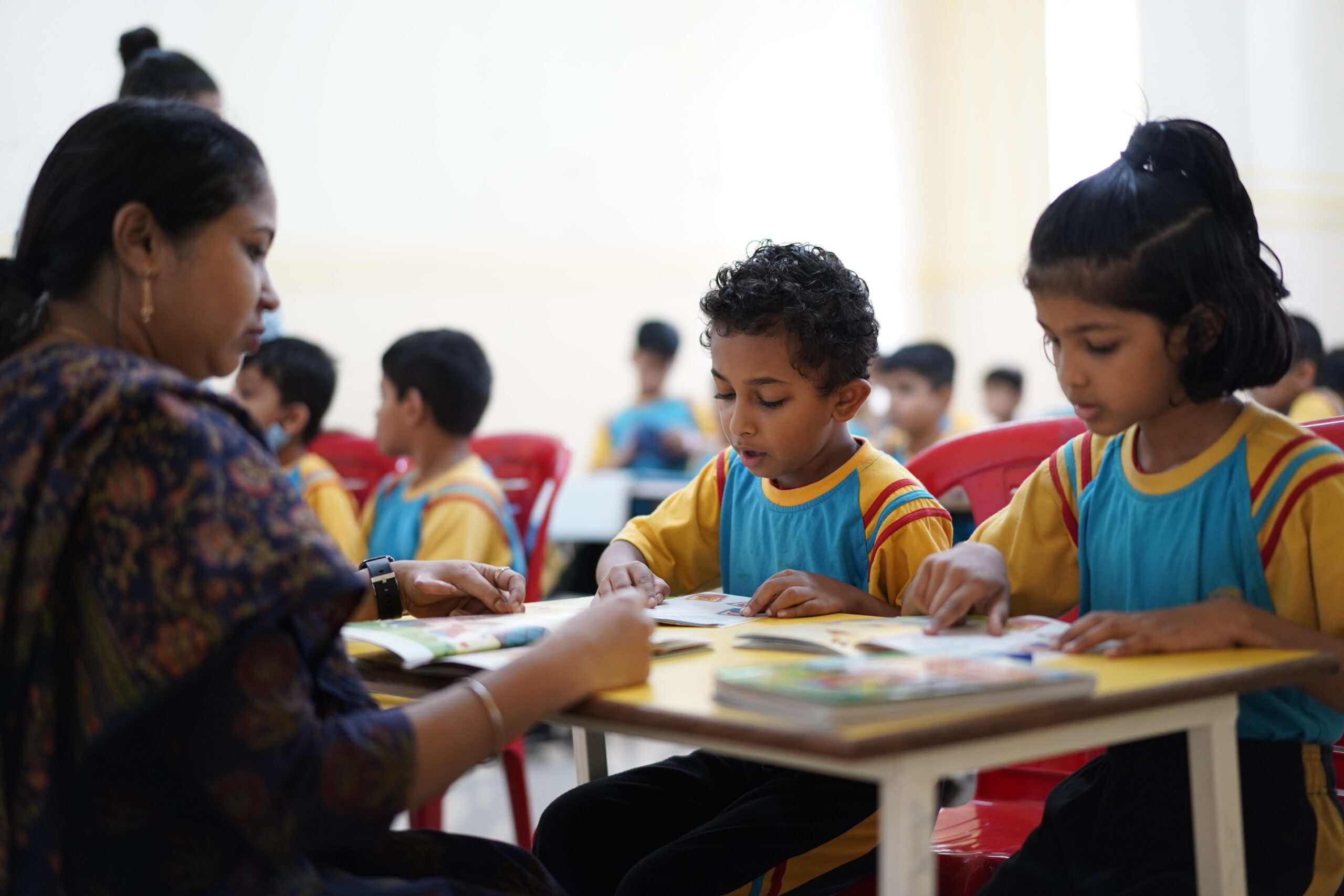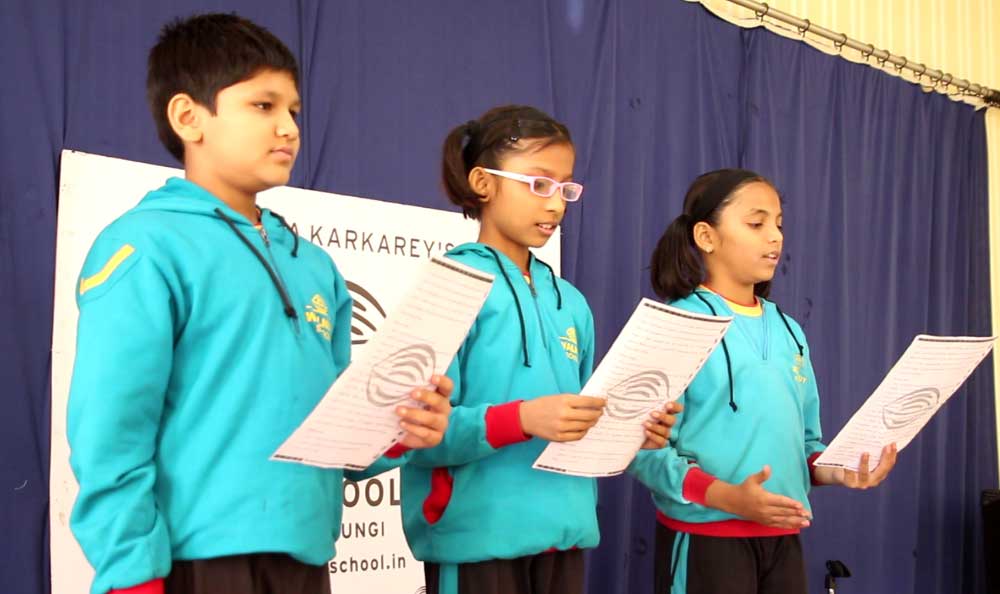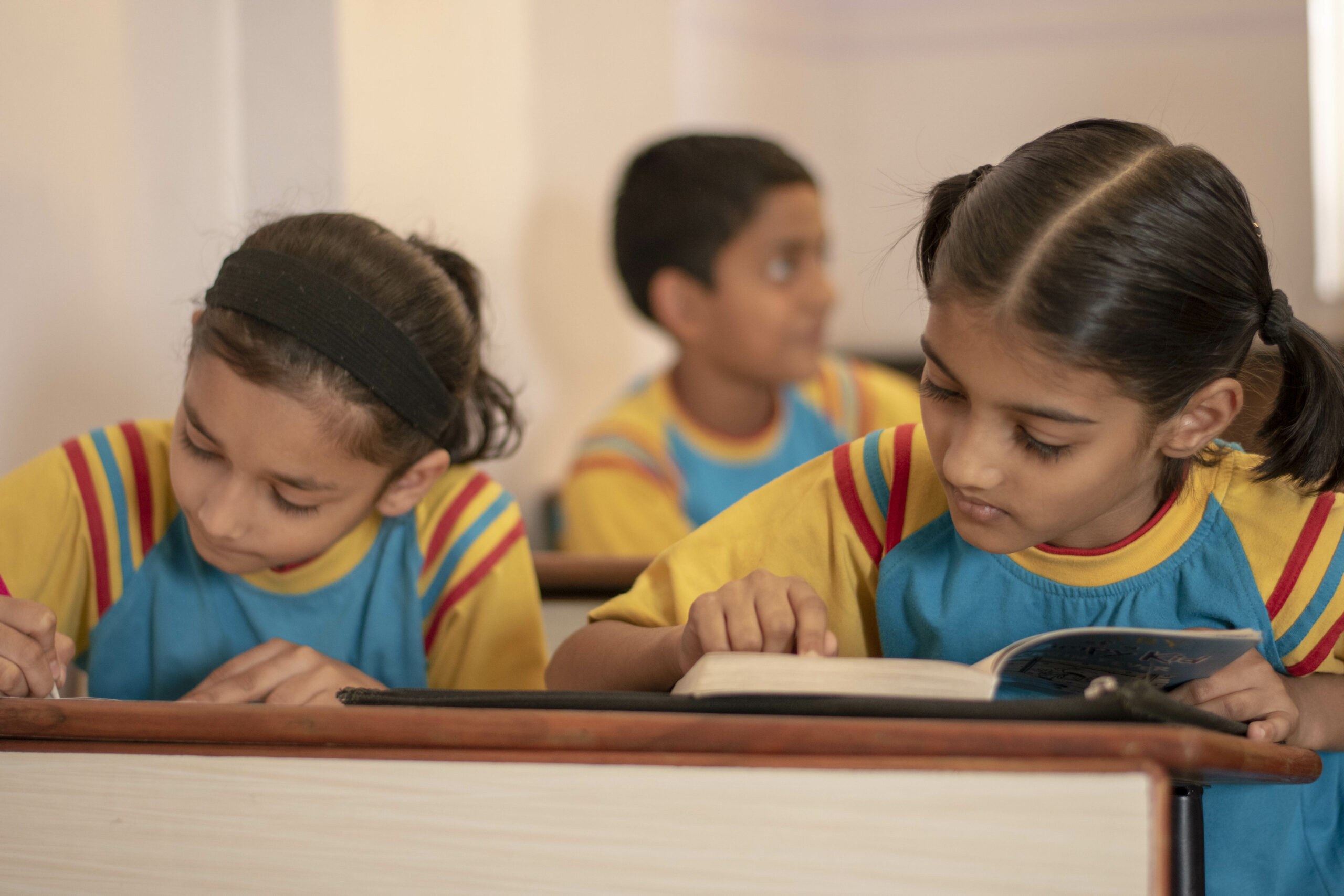Baby Walnut Kindergarten : Nursery, Jr KG, Sr KG
NOVEL READING AND ACTIVITIES
We invest a lot of time in developing the reading skills of the children and we do it right from Nursery itself.
Students have a READ period each day. In Nursery, we have changed the sequence of the alphabet when we teach it to them. The first 6 letters we teach are a, c, t, b, m, r. Right after the first three letters you can form the word cat. Then bat, mat, rat.
So within three weeks of starting school the kids figure out that letters have sounds, sounds form words and they can read! This gets them so excited that they start trying to read everything that they see around them. Their brains start processing letters that they see around them. They try to read signs on the road, words on your t-shirt – whatever they see!
They learn basic phonic sounds, then as they go to Jr KG they learn blends and clusters. We use UK’s banded books for our reading program. Sr KG kids start reading short stories on their own. With the early start, they get ahead on the learning curve pretty quickly and our Sr KG students are a year or two ahead of other kindergarten students, easily.
NOVEL READING AND ACTIVITIES

They get to work through the pronunciation of words and understand sentence structures. They are encouraged to build on their sight reading.
Std 1, 2 : 3 dedicated classes / week
Std 3, 4 : 2 dedicated classes / week
There are special periods allotted to reading in the timetable all the way up to Std. 4. If English reading / understanding is a problem, then tuition classes are needed as the children get older. Then, they end up doing everything twice (once in school, once with the tuition classes) and run out of time for additional learning. It also makes the children hate studying. This holds back the child’s progress overall.
By giving special attention to their reading skills in the early years, we try to minimize this problem for their future. There is a huge difference in the reading ability of the kids who have grown up in Walnut right from the beginning and in those who join in higher classes!
What happens in the reading class? We have extra teachers who get the kids in groups of 4 and make them read aloud. They read “banded books”, where each band has a different difficulty level. The student groups are made based on the reading level they are at and the band is chosen accordingly.
Bands are like levels. Each book is marked by a coloured star. Pink is the lowest and beginner colour (level). The next is yellow. Then red and so on. There are ten such colours and ten books in each colour band. Students are evaluated on their current level and that becomes their starting point.
The teacher helps each student one-on-one and that is how they level up their reading skills. As they go through the books of a certain band, their reading improves and the teacher moves them up to the next band. Students also figure out how to guess the meaning of certain words, based on the context. Once they finish all the bands, they become “free readers” and can choose any books they want to read from the whole library and read on their own.
This is a very important skill to develop. It helps them handle their core subjects in a much better way. If they can read properly, then they understand what they are reading. That helps them do better in the classroom, do homework in a better way and they can study and prepare for exams too, on their own. Can you see how the need for private tuition disappears in a scenario like this? Look at the time, effort and money saved when this one skill is worked on properly.
In Std 4, students have novels as textbooks in the fourth quarter. By that time they are expected to have fairly good reading skills where they can get through the reading part with ease. This skill continues to develop from class 5 onwards, as the lessons they have to read in all subjects progressively get longer and have more difficult words that they have to go through.
By students go to class 5 are expected to have achieved a fair level of fluency where they can go through all that on their own – without additional tuition support.

Why do we have a READING THEATRE activity like this?
- A way to involve students even more in reading aloud and motivate them. All children have to participate actively. No one can be passive with a story in their hand and a turn to read aloud.
Students “perform” by reading stories aloud. They do so without costumes or props. Their expression and delivery is the main thing. So they have to read well. - Children are ‘tricked’ into a lot of re-reading, which is a key factor in developing fluency. Increased fluency = increased comprehension / understanding of what is being read. Greatly helps academics as they grow older!
- Safe, known setting (classroom) and somewhat known audience (classmates + parents) so few jitters only! No risk for the students to fail on stage as no memorization is needed. A great way to start the public speaking journey!
- Creates confidence and improves the self-image of students at such an early age!
All this is to help them develop their reading skills in a better way. Why is reading important?
- Expands vocabulary and improves fluency
- Improves comprehension and understanding
- Gives more information, builds confidence
- Helps with building a flow in thought process and remembering
- Helps with getting context quickly, making connections and predictions
- The stories and material help with later problem solving and decision making
- Helps to analyse, interpret and communicate better
- Helps to become an independent learner and future academic success

We also encourage parents to do this with the kids at home – right from Nursery – so that they become strong readers. Sadly, very few parents actually dedicate the time for this activity. That is the reason why we have this in school.
How the reading program came to be
KG to Std 2 students demonstrate their reading skills through a Reading Theatre event on Electric Saturdays.